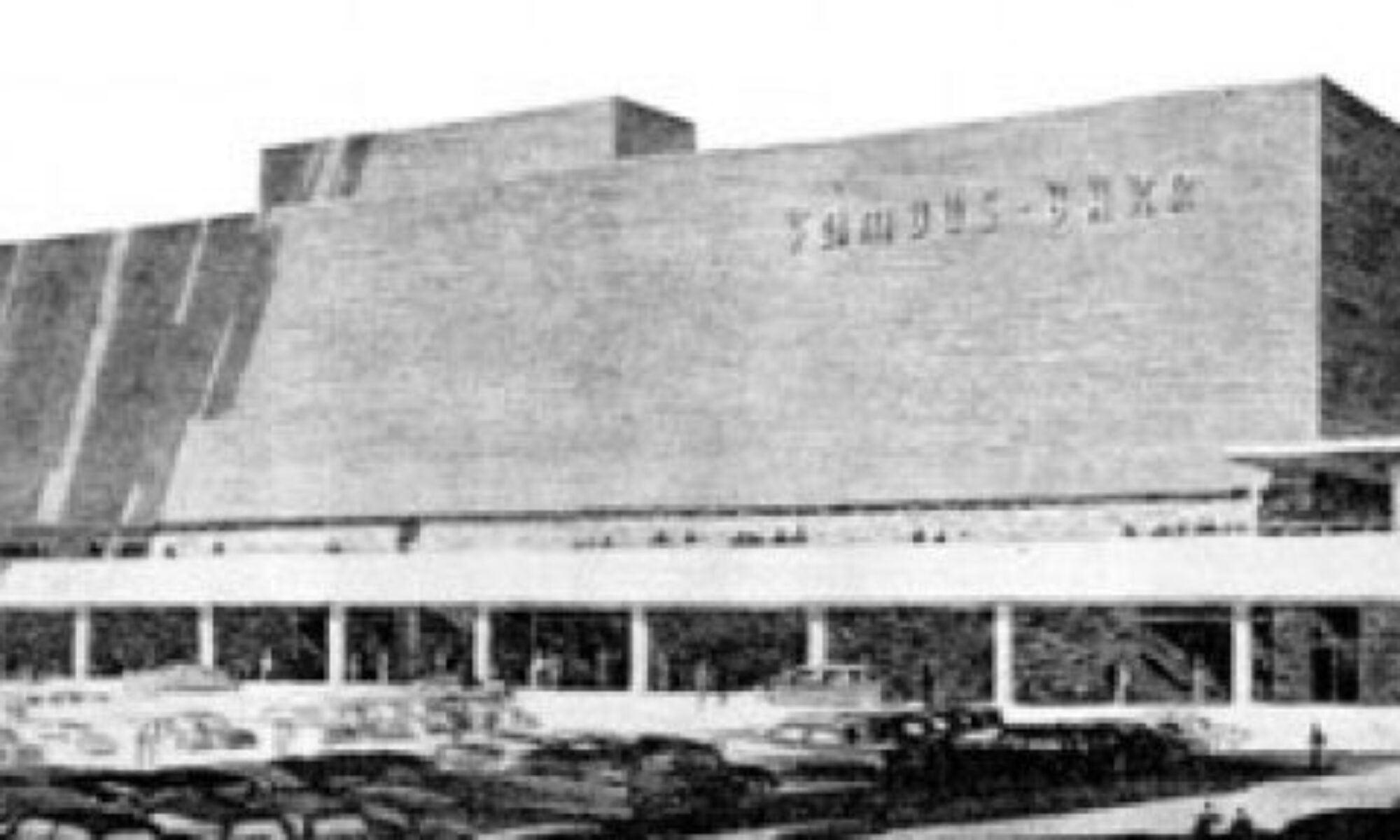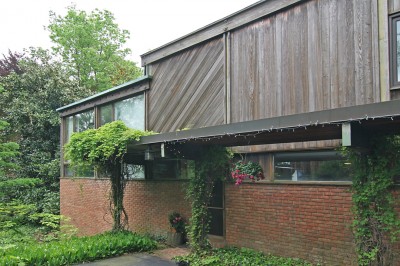
In April 2010, a friend and I were invited to Indianapolis for an Atomic Crash Party. Darren Snow had been following Atomic Indy, authored by Baz Mcm, who is the muscle behind the Atomic Crash Parties.

On a sunny and crisp Saturday, we traveled northeast from the heart of downtown Indy to what appears to be a classic mid-American inner ring suburb, and down a street lined with mostly mid-century ranches in various states of decline or renewal. The 3 shown in the photos above are renewing!

The scene for Atomic Crash Party #5 is one of exuberant renewal, a vibrant work-in-progress by architect Wil Marquez.

Wil designed and fabricated the plastic panels that make this unique fencing that provides partial privacy for a front patio seating area with a fire pit. He traced the shadows of the leaves from these very trees as the sun shown through them to create the pattern.

There are 3 distinct outdoor lounging areas around the house: the front yard, private patio by the side door off the living room and the grilling area show above outside the back garage door. I love the bent wood posts; adds some subtle curves to a rigorous pattern of straight lines.

We enter from the one-car garage directly into the kitchen…

…and the kitchen is open to the dining and living rooms. There were easily a minimum of 30 people milling about indoors and out, but it did no feel crowded. Natural light and open floor plans always make a space feel bigger.



I was particularly charmed by the wood panels that open up to let in air, a clever way to get ventilation when you have fixed picture windows. Also note the burnt orange wall with the raised, wooden appliques. The wall is in-progress, and I noticed a small stack of them out in the garage, waiting to be affixed to the wall. It gave the charming impression of making ones own puzzle pieces and casually putting the puzzle together in ones spare time.
It also made me realize that rehabbing and renovating a mid-century ranch house is just like rehabbing an early 1900s home: it’s a long, continual journey toward an ever-elusive finale, and the shop talk about the process is pretty much the same no matter the era your home was originally built.

One of the bedrooms has been converted into a TV/rumpus room. Again, note that a room that would now be considered small feels perfectly fine from an abundance of natural light and the proper editing of items within the space. Also of note is that several guests at the 3-hour open house wore era-appropriate clothing, including the gentleman in the middle (above) who wore a blue & white seersucker suit that was to die for!

Each of the bedrooms has extra storage above the sliding door closets, and these cabinet doors match the ones under the dining room window. Just love how these doors match the slope of the ceiling. It’s these tiny details that add character while solving the problems of where to stash our stuff.

Being an architect, Wil has designed and built several new built-in pieces – like this table in the bedroom – that serves all needs while freeing up square footage.

He did the same in his office, completing the installation of this built-in desk the day before the Crash Party.

This chair in his office was designed and built by a friend of his. As he promised, it is a surprisingly comfortable piece of fine art.

The powder room, above, is a space that appears to have all new fixtures, but it’s become much easier to find laminates and fixtures that mimic the original vintage of the home. Again, rehabbing an atomic ranch is just like rehabbing older homes: restore what you can, or replace with new items that replicate history.
Realtors have long told me about a peculiar mindset of some people wanting to own an MCM ranch house: they want one in mint condition that requires no work, and become crestfallen and disillusioned upon learning it will require additional remodeling expense and a lot of work to have their space age dream. With so many of these ranch homes heading toward and past the 50-years of age mark, these are now historic homes that have seen a lot of living, renovating and remuddling in their lifetime. Just as with a 1922 3-story mansion in Compton Heights, if you want to live in the splendor of a specific period of a home’s life, you have to put in the money and labor to make it happen.

Now, the materials you deal with to rehab/restore a mid-century ranch can be a bit easier to come by and work with. Properly repairing or replacing drywall is something any handy person born after 1945 can do, whereas working with plaster is an ancient art. Upgrading an existing central air system from 1960 is much less of a hassle than putting in central air where none originally existed. But regardless of the home’s age, flooring, roofing, windows, electrical and kitchens and bathrooms are going to need extensive work. And that work will go on forever, or so it seems.

Wil’s garage looks pretty much the same as any other rehabber’s – a laboratory of tools and items waiting to be brought back to life. I love that he – and all the other Indy homeowners who’ve opened up their homes for the Atmoic Crash Party series – let people in to see their works in-progress, because the process is just as fascinating as the end result. And seeing possibility in action is true inspiration.

I know that St. Louis is ready for their own version of an Atomic Crash Party. Baz knows that hundreds of American cities are poised for the same, and is working on taking this concept nationwide, which is exciting because it’s this kind of grassroots movement that pushes mid-century modern preservation toward mainstream reality.
So, all you StLers who’ve been quietly labor-of-loving over your ranch houses, how about an open house? It doesn’t matter that you’re “not quite done,” because – realistically – when will that day ever come? Is any house ever really done? All you MCM Rehab Pioneers in Ridgewood, Craigwoods, Frostwood, Harwood Hills, the south side of St. Louis Hills… would you be interested in opening your doors for a few cocktail hours? If the idea is intriguing, there’s a group of us that can help you coordinate such a worthy endeavor. Just speak up!
And thank you to Baz and all his jet set pals for letting us be a part of such a wonderful party and concept. You inspire possibility!
 5701 Chippewa
5701 Chippewa
























































